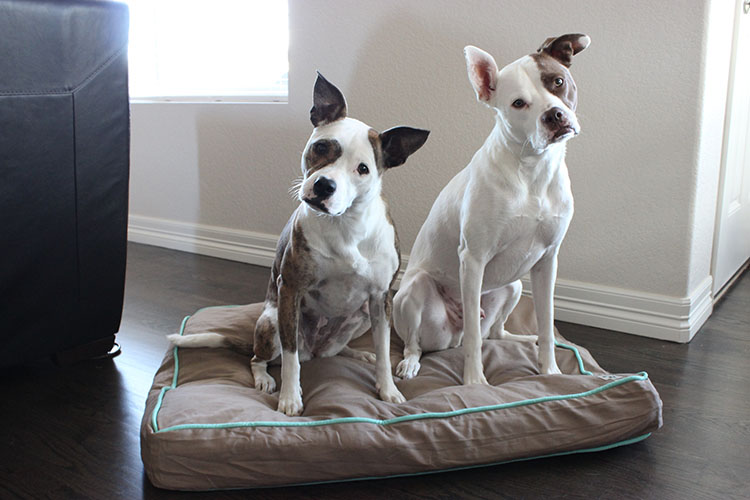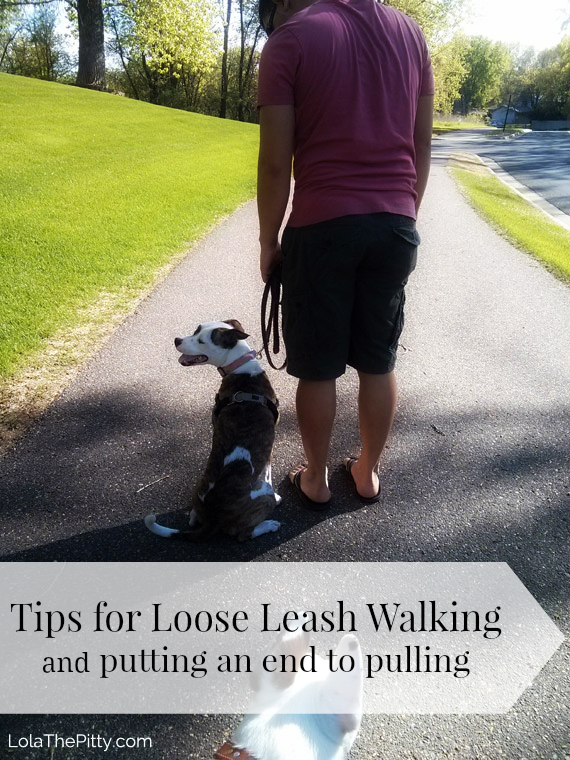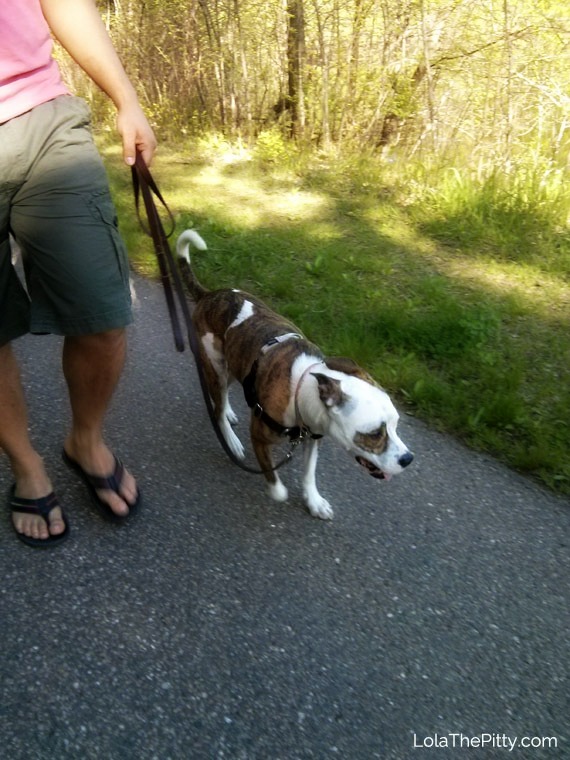About a month ago, I walked Lola for the first time in almost two years on a regular collar. Without being pulled. I wasn’t sure if I would ever be able to say that.
As many of you are aware, a while back we switched to a trainer who uses all positive reinforcement and clicker training. And our experiences couldn’t be better.
In the few short weeks that we had been working with Linda Legare CPDT-KA-KPCTP, we made more progress than we did in several months at the first training facility we took Lola to when she was a pup.
Instead of punishing unwanted behaviors (i.e. pulling), we built positive associations with desired behaviors. We learned to be patient and consistent. We began to teach our dogs what we wanted them to do and rewarding them when doing so.
When we are outside, there are a squirrels, cars, birds, people…distractions. We had to increase the treat value whenever we were outside. For us, this meant using beef liver or chicken (hot dogs and lunchmeat are also great options). If I were to bring kibble or something ‘boring’, Lola would’ve never been willing to work for those – so that was part of figuring out what makes Lola tick.
We first worked on reinforcing Lola being next to our side and making eye contact. Whenever she would do so we would click and treat. We began building this focus inside our house and then brought her out in the yard and so forth.
When the walks began, we started out in the boring part of the neighborhood. We walked the opposite way from her favorite ‘run-crazy, play-disc-and-ball’ park. After all, we wanted to set her up to succeed.
We also only worked on strict heeling for about 5 minutes of the walk. We didn’t want to burn her out and as long as she wasn’t pulling on the leash, let’s face it, we were happy.
Possibly the most important thing we changed: we stopped allowing her to pull us. This was likely the hardest part, as easy as it truly is.
Lola walks on my left side – so to set up our walk position, I held the leash and clicker in my right hand (sometimes even put my wrist through the leash handle) and treats in my left (closest to her).
She then chose whether to keep the leash loose or walk out to the end of her leash with full tension on. I left the leash alone. I did not pull her back, I did not yank on it. Instead, I did my hardest to keep her attention. Patience is key here. This meant a short time between each command (combined with a lot of coaxing noises coming from my mouth, ha). Walk a couple steps, stop and sit, walk a few more steps, stop and sit. This kept her on her toes and thinking, about me, about what to do. Whenever she made eye contact > click, treat. Whenever she was in the correct heel position > click, treat. Whenever she sat next to my side > click, treat. In the beginning, it was a lot of click, treat, click, treat, click, treat. Note to self, bring a lot of tiny treats.
When she broke her concentration (which happened a lot) and ran to the end of her leash (also happened a lot), I stopped dead in my tracks and didn’t budge. The moment she broke the tension in the leash and turned back towards me > click, treat. This took longer than desired in some cases. And sometimes, she didn’t turn back to look at me on her own. In those instances, I looked next to my side where she should have been and said outloud, “Where is Lola? Come, Lola” and directed her to the correct position. Once she was there, we started all over again. Sometimes (quite often) we didn’t make it very far on our walks, but in reality – we did. We were taking baby steps that would soon prove their worth.
Once we started getting better and building focus, we began the walk on her harness (the Freedom Harness) and about one-third of the way into the walk, I would switch and clip the leash onto her regular, flat collar. The first few times it didn’t go so well. She immediately pulled to the end of her leash and my reaction was the same – stop. She looked back and turned towards me – yes!! Click, treat. I then began coaxing her along and maintaining eye contact for several strides and kept clicking and treating every time. Before I knew it, we had just walked at least 50 feet with her not pulling! I was beyond thrilled. Maybe, just maybe, we would be able to walk on the leash like a team one day!
Stop jerking the leash. Since switching trainers and methods, we had to nix this bad habit ourselves. Instead of ‘popping’ the leash if she didn’t do as we requested, we instead reward her for the good. The progress we made in just two months was mind blowing.
And as I mentioned before, another one of the most helpful tips was to use a shorter chain of commands. Walk a few steps and sit. Walk a few more steps – sit. Walk one step – sit. Keep your dog on their toes and thinking. This really worked great if Lola was having a hard time focusing on me. We weren’t making it anywhere in record time, but that wasn’t exactly our intentions.
This video below was from a recent walk we took together. I’m sooo proud of her.
Does your dog pull? Have you been able to make progress? I truly encourage you to find a trainer in your area and begin using clicker-training. Truly putting the time and effort in and setting a goal for you and your dog will make a world of difference. I used to get so frustrated with Lola and myself and would never make it more than a few days of trying a new method, but trust me, you can do it – we did! Persistence, patience, and repetition.
Try not to get frustrated and only work on your walking for about 10 minutes at a time – and remember, even a few seconds of your dog focusing on you is improvement! If you notice yourself getting irritated, just stop and come back to it later. Good luck!
related:



